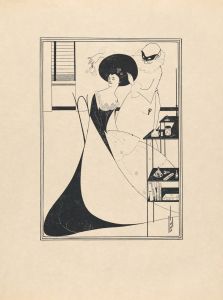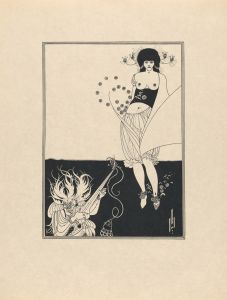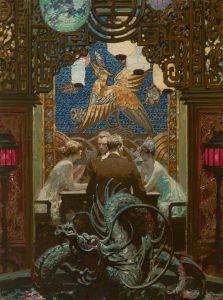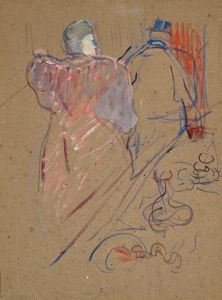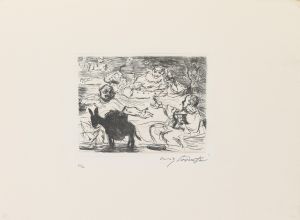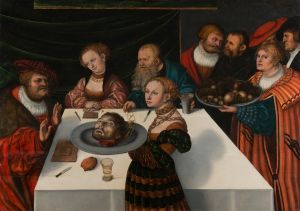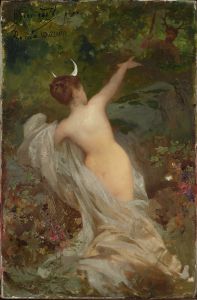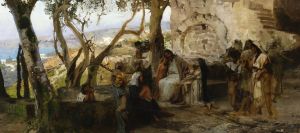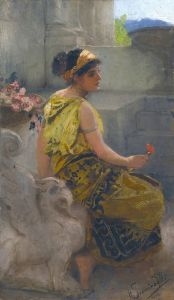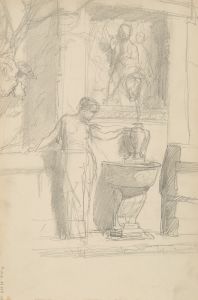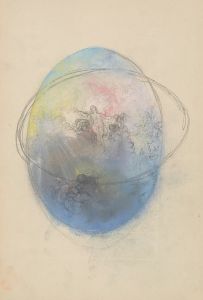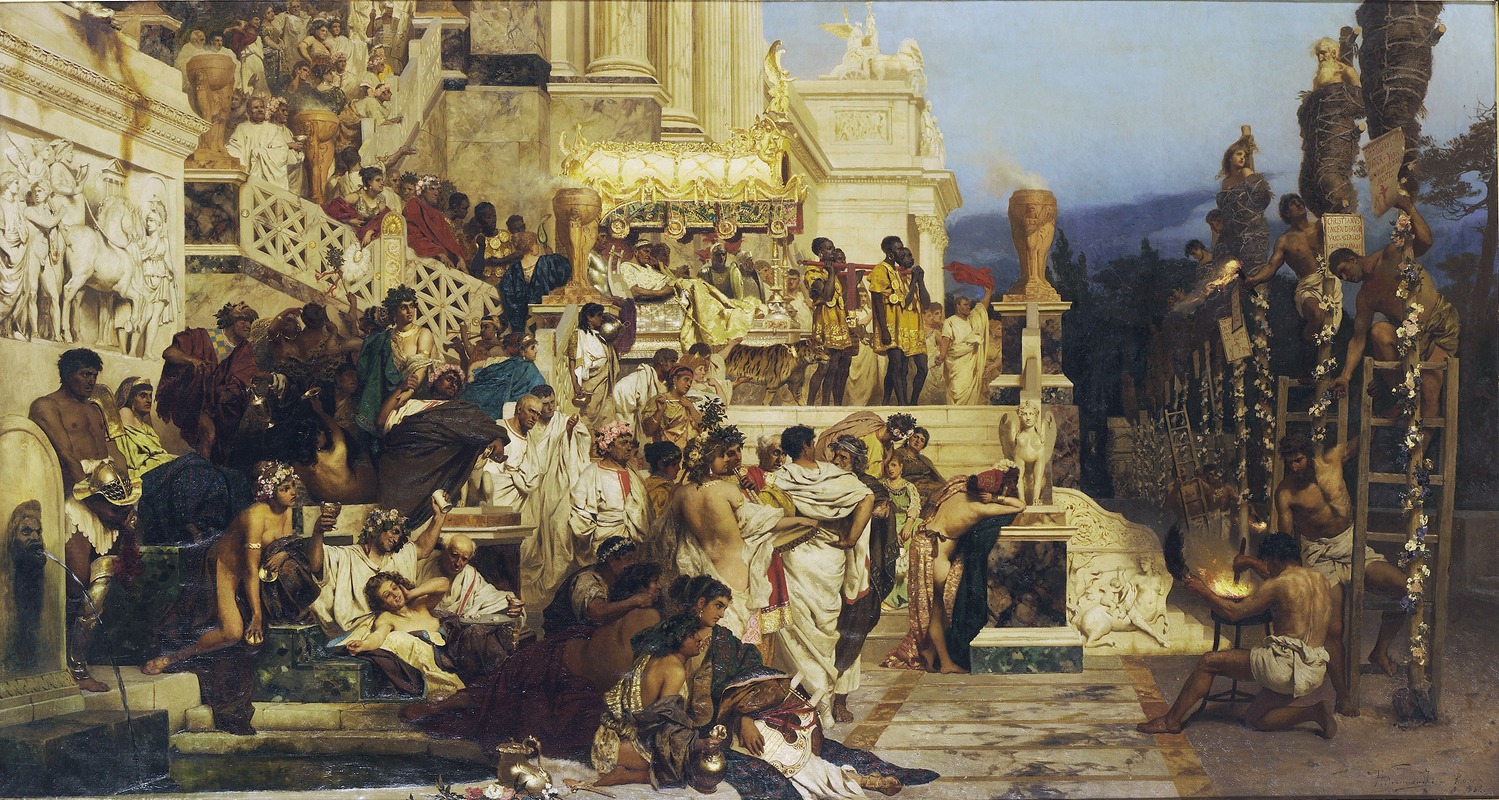
Nero’s Torches
A hand-painted replica of Henryk Siemiradzki’s masterpiece Nero’s Torches, meticulously crafted by professional artists to capture the true essence of the original. Each piece is created with museum-quality canvas and rare mineral pigments, carefully painted by experienced artists with delicate brushstrokes and rich, layered colors to perfectly recreate the texture of the original artwork. Unlike machine-printed reproductions, this hand-painted version brings the painting to life, infused with the artist’s emotions and skill in every stroke. Whether for personal collection or home decoration, it instantly elevates the artistic atmosphere of any space.
Henryk Siemiradzki's painting "Nero’s Torches," also known as "Candlesticks of Christianity," is a significant work of art that captures a dramatic and somber moment in ancient Roman history. Completed in 1876, this painting is a large-scale oil on canvas that measures approximately 385 cm by 705 cm. It is housed in the National Museum in Kraków, Poland.
The painting depicts a scene from the reign of Emperor Nero, specifically focusing on the persecution of Christians in Rome. The historical context of the painting is rooted in the aftermath of the Great Fire of Rome in 64 AD, a catastrophic event that destroyed much of the city. According to historical accounts, Nero blamed the Christians for the fire, leading to a brutal crackdown on the early Christian community.
Siemiradzki's work portrays the horrifying spectacle of Christians being used as human torches to illuminate the imperial gardens during a nighttime event. The painting captures the moment with a haunting realism, showing the bound figures of Christians tied to stakes, their bodies set alight to serve as macabre sources of light. The composition is carefully structured to highlight the contrast between the opulence of the Roman setting and the suffering of the martyrs.
In the foreground, the painting features a group of elegantly dressed Roman spectators, including Nero himself, who is depicted observing the scene with a detached demeanor. The luxurious surroundings and the indifference of the onlookers serve to emphasize the cruelty and decadence of Nero's court. Siemiradzki's attention to detail is evident in the rich textures of the fabrics, the intricate architecture, and the play of light and shadow that adds depth to the scene.
The painting is notable for its dramatic use of light, a technique Siemiradzki employed to enhance the emotional impact of the scene. The flickering flames cast an eerie glow over the figures, creating a stark contrast between the bright, fiery light and the dark night sky. This use of chiaroscuro not only heightens the visual drama but also underscores the moral darkness of the event being depicted.
"Nero’s Torches" is a powerful commentary on the themes of persecution, martyrdom, and the abuse of power. Siemiradzki, a Polish artist known for his historical and biblical scenes, used this work to explore the tension between civilization and barbarism, as well as the resilience of faith in the face of oppression. The painting reflects the 19th-century interest in historical subjects and the Romantic fascination with dramatic, emotionally charged narratives.
The work was well-received upon its unveiling and contributed to Siemiradzki's reputation as a leading artist of his time. It remains an important piece in the study of historical painting, offering insight into both the historical period it depicts and the artistic trends of the 19th century.





